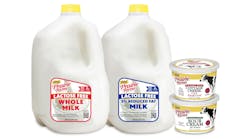I have grown concerned about the recent use of corn as a source of energy (for ethanol) and the resulting cost impacts on the food industry. Recently this debate has expanded into the area of “biomass” energy conversion. What is the basis of this broader definition and what are the basic technologies included in biomass conversion?
Corn and soybeans are the predominant renewable products used to produce ethanol fuels worldwide. The use of these commodities for both food and energy has led to the rapid increase in prices for animal feed, ingredients and the resulting consumer food products. The resulting public concern has led to defining a broader category of commodity products that can be used as basic feedstocks for energy production.
Biomass is defined as any organic matter that is available on a renewable basis, including agricultural crops, plants and trees, as well as animal, municipal and other waste materials. Biomass conversion primarily relies on three basic types of technology to convert biomass products into inert gases, oils and fuels that can be used to produce energy:
1. Thermal technologies, which use high temperatures to convert biomass feedstocks into energy, typically in the form of electricity and heat.
2. Chemical technologies, which use chemical agents to convert the feedstock to energy, typically in the form of liquid fuels.
3. Biochemical technologies, which use biological agents to convert biomass feedstocks into energy, typically in the form of liquid and gaseous fuels.
These technologies are not limited to just producing energy. These processes also will produce byproducts that can be valuable resources and ingredients for products such as chemicals, animal feed and construction materials. These low-cost secondary products can, over time, become very profitable sectors on their own.

